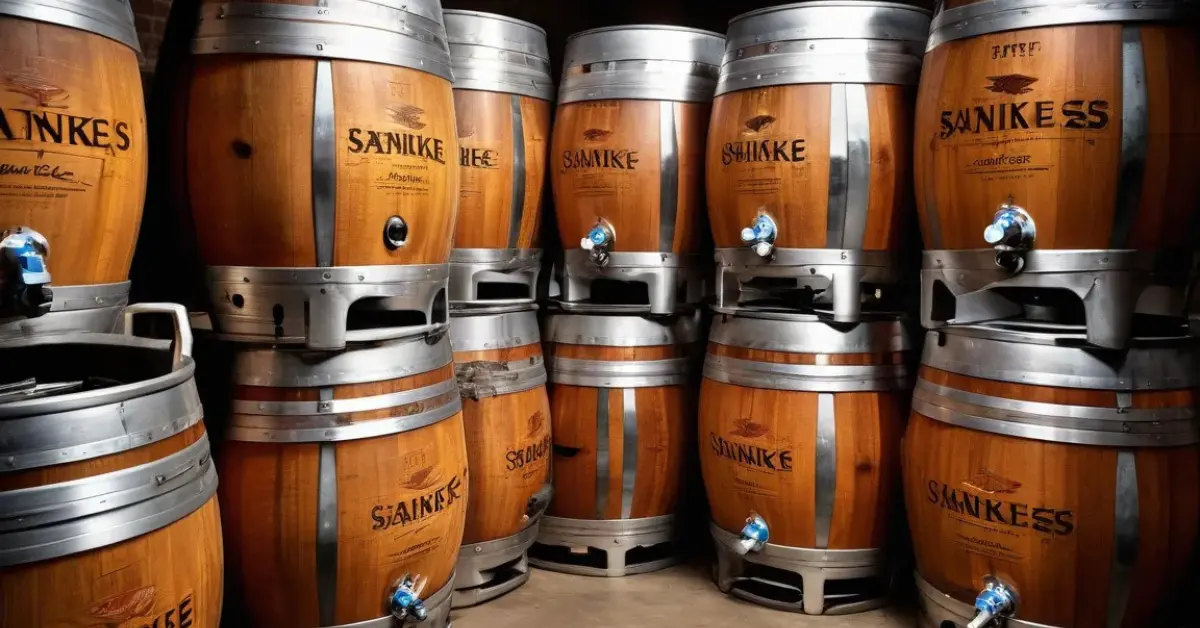Introduction to Sanke Kegs:
The Sanke keg system has become the backbone of commercial beer dispensing worldwide. These stainless steel containers revolutionized draft beer service when they first appeared, and today Sanke kegs remain the preferred choice for breweries, bars, and restaurants. This comprehensive guide explores everything you need to know about Sanke kegs – their design, benefits, proper handling, and why they dominate the beverage industry.
What Are Sanke Kegs?
Sanke (pronounced “sahn-kay”) refers to a specific type of keg coupling system developed in Japan. The name comes from the Sankey Chuo Group that originally designed it. Unlike other keg systems, Sanke uses a single-valve coupler that simultaneously handles beer dispense and gas input through different internal pathways.
Key Features of Sanke Kegs:
-
Made from durable 304-grade stainless steel
-
Standard sizes: 1/6 barrel (5.16 gal), 1/4 barrel (7.75 gal), 1/2 barrel (15.5 gal)
-
Single-valve D-system coupler (most common in US)
-
Non-removable spear (internal tube) for safety
-
Industry standard for commercial beer distribution
Why Sanke Kegs Dominate the Market?
1. Superior Hygiene and Safety:
The Sanke system’s sealed design prevents contamination and oxidation better than other keg types. The non-removable spear means no open vessel during tapping.
2. Consistent Dispensing Performance:
Sanke kegs maintain proper carbonation and deliver foam-free pours when properly maintained. The coupler design ensures smooth beer flow.
3. Cost-Effective for Breweries:
Durable construction allows Sanke kegs to last 20+ years with proper care. Their standardization reduces production costs.
4. Global Compatibility:
While regional variations exist (D-system in US, S-system in Europe), Sanke couplers work worldwide with proper adapter.
Sanke vs. Other Keg Systems:
| Feature | Sanke | Cornelius (Corny) Keg | European Sankey |
|---|---|---|---|
| Coupler Type | Single-valve D-system | Dual-valve ball lock | S-system |
| Spear | Fixed, non-removable | Removable | Fixed |
| Common Use | Commercial beer | Homebrew, soda | European beers |
| Cleaning | Requires specialized equipment | Easy to disassemble | Professional cleaning needed |
| Availability | Global standard | Limited to homebrew market | Europe/UK standard |
Proper Handling of Sanke Kegs:
1. Storage Best Practices:
-
Store Sanke kegs upright at 38°F (3°C)
-
Keep in dark environment to prevent light strike
-
Rotate stock using FIFO (first in, first out) method
2. Tapping Procedure:
-
Clean coupler and faucet lines
-
Purge keg valve with CO2
-
Attach coupler and lock securely
-
Set proper PSI (10-12 for ales, 12-14 for lagers)
-
Pour test glass to check carbonation
3. Cleaning and Maintenance:
-
Clean every 2-3 weeks with caustic brewery wash
-
Use specialized Sanke keg cleaning equipment
-
Inspect coupler washers regularly
-
Never use petroleum-based lubricants
The Science Behind Sanke Keg Performance:
Sanke kegs optimize beer dispensing through:
-
Pressure Dynamics: The single-valve design maintains constant pressure
-
Thermal Regulation: Stainless steel preserves temperature
-
Gas Exchange: Separate gas/liquid paths prevent over-foaming
-
Hygienic Design: Eliminates contamination points
Sanke Kegs in Craft Brewing:
While originally designed for macro breweries, Sanke kegs now serve craft brewers by:
-
Reducing packaging costs vs. bottles/cans
-
Maintaining beer freshness longer
-
Providing professional presentation
-
Enabling direct distribution to bars
Troubleshooting Common Sanke Issues:
| Problem | Likely Cause | Solution |
|---|---|---|
| Excessive foam | Incorrect temperature | Chill keg to 38°F |
| Flat beer | Low CO2 pressure | Increase 1-2 PSI |
| Leaking coupler | Worn washer | Replace O-ring |
| Off-flavors | Dirty lines | Clean entire system |
| Slow pour | Kinked line | Check tubing path |
The Future of Sanke Technology:
Innovations coming to Sanke systems include:
-
Smart kegs with RFID tracking
-
Self-cleaning coupler designs
-
Integrated pressure monitoring
-
Eco-friendly lightweight versions
-
Universal coupler adapters
Conclusion:
Sanke kegs continue to set the standard for commercial beer dispensing after decades of service. Their unmatched combination of durability, hygiene, and performance makes them indispensable for breweries and bars alike. As draft beer technology evolves, the Sanke system adapts while maintaining its core advantages. For any establishment serious about beer quality, Sanke’s kegs deliver consistent results that satisfy brewers and customers.
FAQs:
1. Why are they called Sanke’s kegs?
Named after the Japanese Sankey Chuo Group that developed the original design.
2. Can I use Sanke kegs for homebrew?
Possible but impractical – Cornelius kegs work better for small batches.
3. How many beers in a 1/2 barrel Sanke?
About 165 12-oz servings accounting for proper pour and foam.
4. What’s the difference between D and S systems?
D-system is North American standard, S-system is European – couplers aren’t interchangeable.
5. How long does beer last in a Sanke keg?
3-6 months refrigerated, though hop-forward beers degrade faster.
6. Can I clean Sanke kegs myself?
Only with proper commercial equipment – most breweries offer cleaning services.











